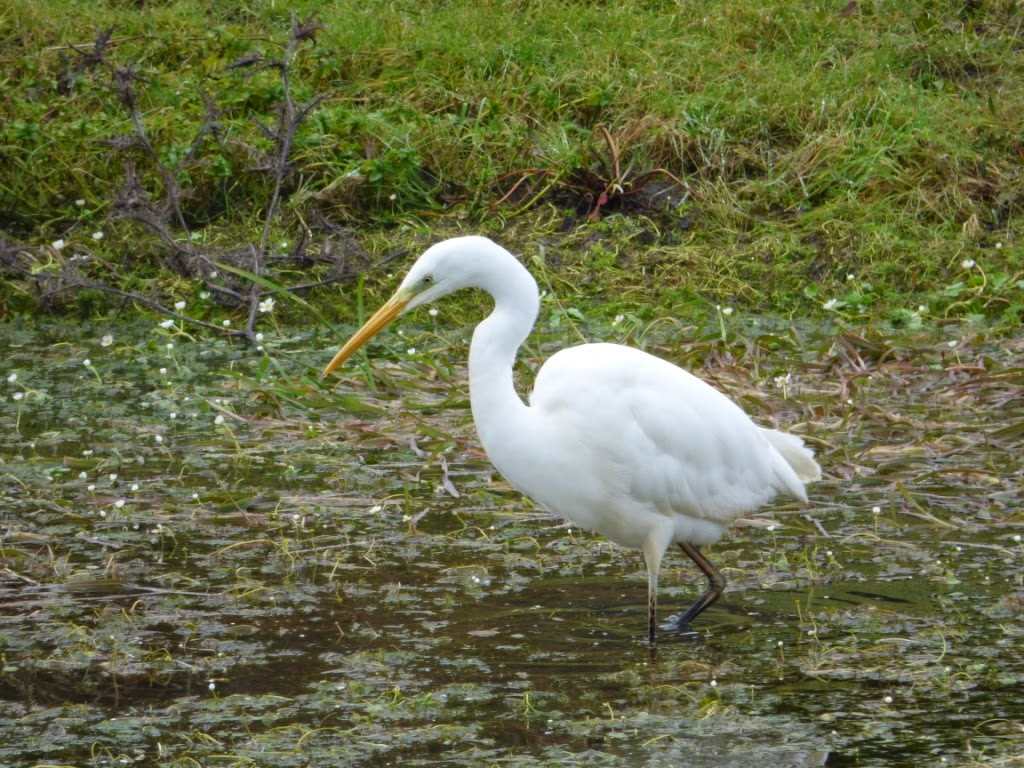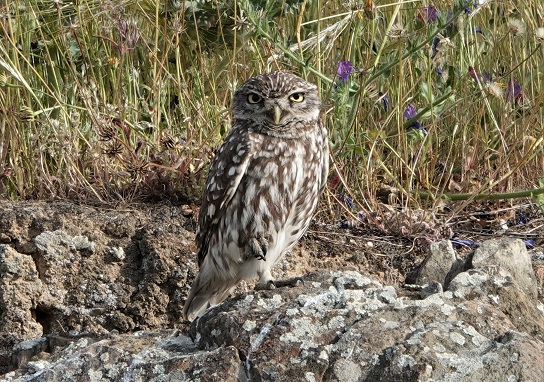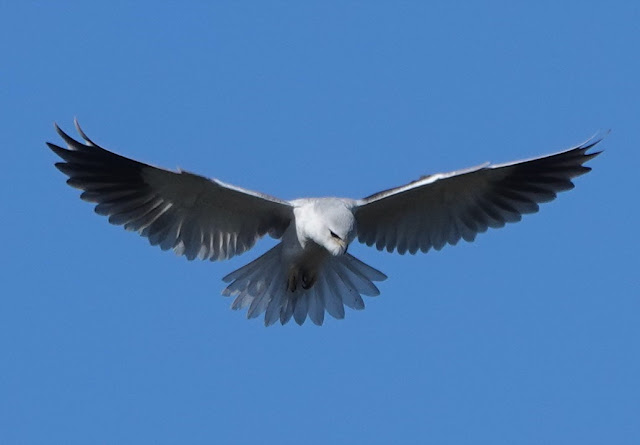The game is patience
 |
| Great Egret (Martin Kelsey) |
 |
| Great Egret (Martin Kelsey) |
Without moving, it turned and twisted its neck, changing the line of vision and marking the slightest movement below the water surface, adjustments for shadow and reflection. It paused and raised a leg slightly and then stirred the water gently with its submerged foot, the body showing a slight vibrating motion as it did so. This movement aimed to flush out prey and, now with both feet planted on the pond's bed, the neck twisted again and in a dramatic horizontal lunge, a strike. In a counterpoint to time slowed-down at the start of our encounter, this attack was like a blur and was successful, yielding a small fish curled at the end of the egret's clasping, pincer-like mandibles.
The sound of an oncoming vehicle caused the Great Egret to pause and raise its neck mast-like and vertical, betraying for the first time its extraordinary length in proportion to its body. As it did so, it looked straight at us with its eyes angled to bring us to the pin-point of its focus, holding us tightly fixed.
 |
| Great Egret (Martin Kelsey) |
Once considered a rarity in Extremadura, the Great Egret is now almost commonplace along rivers, pools and in irrigated areas and they have started breeding in the region several years ago, reflecting a spread westwards of a population that was eastern European. At the pool it was joined by a Little Egret, a fraction of its size, which in turn has spread northwards through Europe. They use foot stirring far more frequently when foraging and overall are a much more active when feeding than Great Egrets, often bursing out into short runs in pursuit of prey at the water's edge. Groups will congregate where parties of Great Cormorant are fishing, with flotillas of cormorants fanning out and appearing to drive shoals into shallower water close to the shore, with the egrets becoming increasingly fenzied with the prospect. As the cormorants move, so the team of egrets leapfrog over each other in short flights to line-up and await the shoal's arrival a little way further down the bank.
 |
| Little Bittern (Martin Kelsey) |
The following day, amongst the yellow winter stalks and stems of Typha, we had chanced upon a male Little Bittern. Whilst the egrets' pure-whiteness is visible from great distance, the Little Bittern is wonderfuly cryptic, despite its strong and contrasting pattern, which like the stripes of a tiger, appears to dissolve in the sharp light and dark effect of vertical vegetation. It remained motionless, eyes (indeed tiger's eye in colour), in heron fashion, directly forward in an intent focus. The tiny fish it will seize, swimming just below the surface at the edge of the mat of vegetation, will be struck by the dart of the bittern's lunge, as if tightly wound coils are dramatically released. A moment's distraction took our eyes elsewhere and when we looked again, the Little Bittern had vanished, deep into the Typha, taking its stare elsewhere.



Comments
Cheers
Sam & Dave